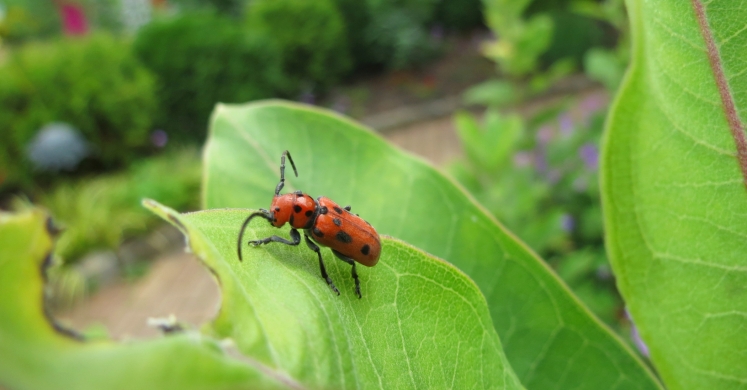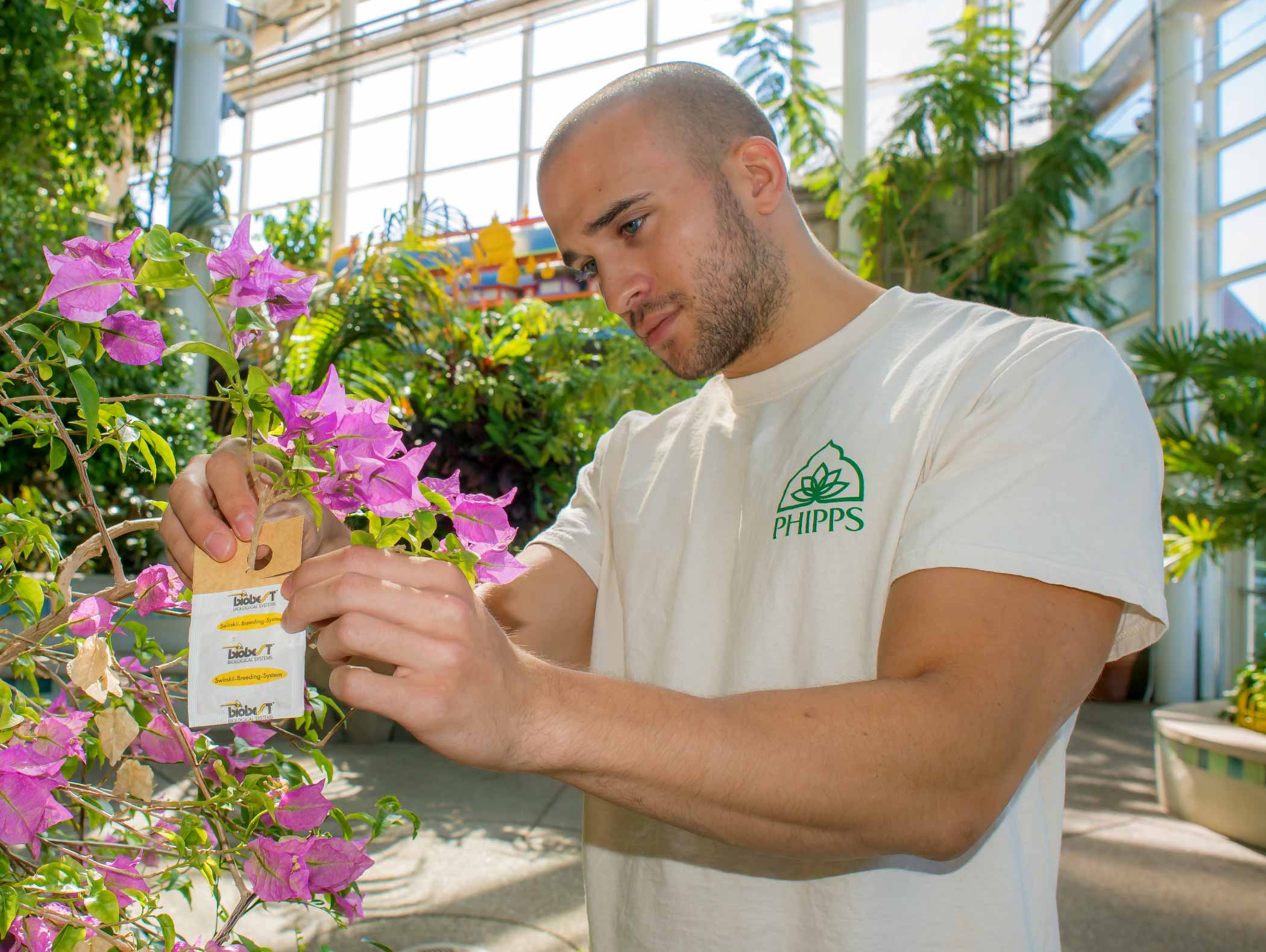Blog

Greener Gardening: Sustainable Insect Control
Greener Gardening is a new blog series designed to help you make your garden, lawn and landscape more beautiful and sustainable by sharing the expert knowledge of Phipps professionals and educators.
When insects are feeding on your outdoor plants, there are tell-tale signs: twisting leaves, hardening leaves, stunted overall growth, black sooty mold, and honeydew — a sticky, glistening byproduct of insects feeding.
But if you see any of these signs, don’t reach for a conventional, chemical insecticide. Instead, use organic-based strategies, which will preserve the ecological health of your yard.
According to Matthew Quenaudon, integrated pest management specialist at Phipps, environmentally sustainable approaches take greater strategizing than conventional methods, but they are worth it.

First, look to prevent infestation. Prevention can begin with planting companion plants, which attract beneficial insects that feed on plant-harming ones. “You want to focus on planting plants that bring in beneficial insects,” says Quenaudon. “Plant small flowers with lots of pollen, and a lot of insects that are good for your garden will come.”
Common Companion Plants
- For late spring bloom: overwintered brassicas (mustard, turnip, mizuna), cilantro, arugula, radish, and phacelia
- For early summer bloom: sweet alyssum, nasturtium, candytuft, carrot (Apiaceae) — dill, parsley, fennel, and Queen Anne’s lace
- For mid-summer bloom: sweet alyssum, borage, buckwheat, catnip, comfrey, dill, fennel, monarda, thyme, and sunflower
- For late summer bloom: borage, buckwheat, catnip, comfrey, mint, oregano, and sunflower
These plants will attract the “good” insects: lacewings, ladybugs, syrphid flies, braconid / ichneumoid / trichogramma wasps, orius, and tachnid flies. The beneficial insects will keep the plant-eating insects — aphids, mealy bugs, thrips, scale, white flies, and mites — under control in your lawn and garden.
Another strategy is to cover your new outdoor plants with screen or mesh netting early on to avoid insect infestation when plants are getting established. Additionally, Japanese beetle traps can be set up across the lawn from your garden. Don’t put the traps near your garden because they will only attract the beetles to your garden.
If you see signs of harmful insect infestation on your vegetation, turn to horticultural oils, says Quenaudon. “They’re much better suited to the environment.” Horticultural oils, which are mineral- or petroleum-based, are mixed with water and then sprayed onto affected plants once a week. Oils kill insects and also stop black sooty mold, which thrives on insect honeydew, from growing. Unlike with chemical insecticides, after treating with horticultural oils there is no reentry time, Quenaudon says. Just allow the plant to dry first before touching it. Horticultural oils can also be used on indoor plants, but take your plants outside to treat them, or in winter, use your shower area.
It is crucial to avoid using conventional, chemical insecticides, because they contaminate water and are dangerous to the environment; they also destroy the natural ecology of your yard. “They ruin the ecological state, creating a sterile environment,” says Quenaudon.
Chemical use can harm pollinators: not just honey bees, but ants, beetles, flies, and mason bees. And in turn, that affects animals further along the food chain. Many animals depend on insects for food. For example, chemical insecticides can destroy the larva of insects that birds feed on.
“There’s a huge percentage of birds that feed larva to their young,” Quenaudon says. Other secondary animals affected by chemical insecticides include mice and snakes, which then can harm the population of local animals such as hawks, he says.
For more help with your landcare needs, contact a Phipps-accredited Sustainable Landcare Professional.
Photos © Paul g. Wiegman, Matthew Quenaudon

